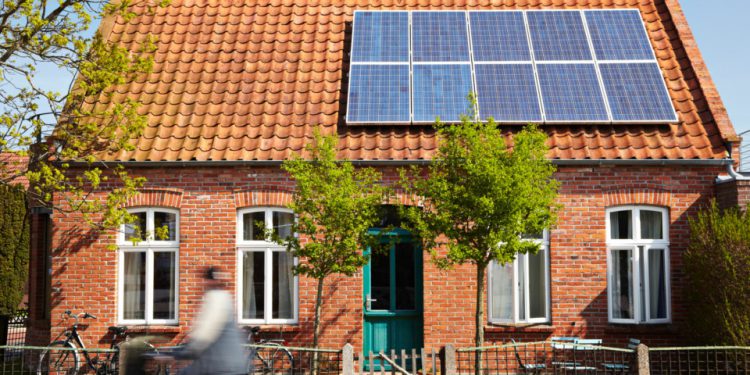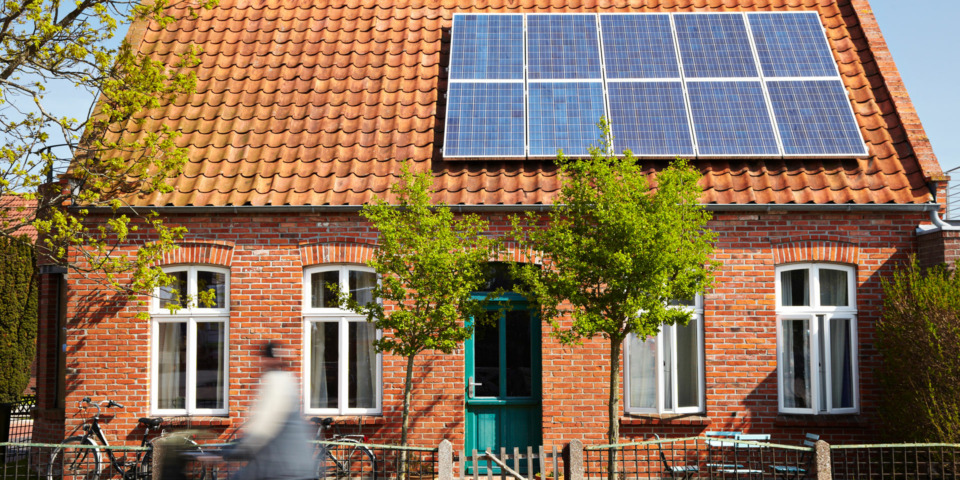Could you cut costs if you take out a ‘green’ mortgage?


Home buyers may need cheaper rates and cashback incentives if you take out a ‘green’ mortgage deal.
Green mortgages are becoming ever more popular, as banks move towards more sustainable lending and home buyers prioritise environmentally-friendly lifestyles.
Here, Which? explains how green mortgages work and offers advice on how you could qualify for a cheaper rate or cashback when purchasing a house or remortgaging.
What is really a green mortgage?
Green mortgages are mortgage deals open to people who buy environmentally-friendly homes or make energy-efficient home improvements to their property.
These deals have been around for several years, however they are only now starting to take off – with research by Defaqto showing nowadays there are 26 green mortgages on the market.
Green mortgages usually offer cheaper rates whenever you purchase a property that conforms to some specific energy standard. For instance, lenders will frequently require the property achieves an energy performance certificate (EPC) rating of A or B.
Green mortgages are most commonly available on new-build homes, however they can also be available for properties which have been renovated to meet high efficiency standards.
How do green mortgages work?
There are three main types of green mortgage:
- Deals that provide a lesser rate for people who buy energy-efficient properties.
- Standard mortgages that provide cashback to individuals who buy energy-efficient properties.
- Mortgages that provide cheaper rates or cashback when individuals make green home improvements.
Lower rates for green homes
Barclays and NatWest offer cheaper rates to people buying energy-efficient homes.
The Barclays Green Mortgage is available on new-build properties with EPC ratings of the or B. Buyers can borrow at as much as 75% loan-to-value.
NatWest’s Green Mortgage can be obtained on new-build or existing homes with ratings of the or B. It is available up to 85% loan-to-value and comes with lb250 cashback.
Cashback deals for green homes
Nationwide offers cashback on its standard selection of mortgages for people who buy energy-efficient homes. The lender’s ‘Green Reward’ can be obtained on new and existing properties with an EPC rated whether or perhaps a high B (86 or above).
The reward is lb500 cashback for properties with an ‘A’ rating, or lb250 for all those with a high ‘B’ rating (86-91). Cashback can be obtained on Nationwide’s full mortgage range.
Foundation Mortgage loans provides a similar deal for landlords who buy properties rated C or above. Those who qualify can usually benefit from a lesser product fee and lb750 cashback on the standard mortgage range.
Cheaper rates or cashback for home improvements
Again, Nationwide may be the biggest lender offering this kind of deal. It’s ‘Green Additional Borrowing’ product allows homeowners to try to get an additional lb5,000 to lb25,000 to make green home improvements at a reduced rate of 0.75%. This deal is available at up to 85% loan-to-value.
Kensington’s EKO cashback mortgage offers lb1,000 cashback to individuals buying or remortgaging. To qualify, borrowers must enhance their home’s EPC rating by at least 10 points within Twelve months of detaching the deal.
Are the rates better on green mortgages?
If you’re already with a bank that provides green mortgages, a few of the deals above might be a good way of accessing more money to finance home improvements.
But if you’re looking to buy a new-build or existing property by having an EPC rating of the or B, could it be worth taking out an environmentally friendly mortgage or sticking to a standard product?
Defaqto crunched the numbers and located there are a couple of two-year fixed-rate green mortgages which are less expensive than the best deal around the standard market.
On five-year fixes, standard mortgages are cheaper at the moment, however, in almost all cases, green mortgages were one of the lowest rates available.
Two-year fix
| Loan-to-value | Cheapest green mortgage | Cheapest standard mortgage | Difference |
| 60% | 1.13% (lb250 cashback) | 1.24% | The green mortgage is 0.11% cheaper |
| 75% | 1.38% (lb250 cashback) | 1.31% | The green mortgage is 0.07% more expensive |
| 80% | 2.49% (lb250 cashback) | 2.65% | The green mortgage is 0.16% cheaper |
| 90% | 3.62% | 3.29% | The green mortgage is 0.33% more expensive |
Five-year fix
| Loan-to-value | Cheapest green mortgage | Cheapest standard mortgage | Difference |
| 60% | 1.28% (lb250 cashback) | 1.27% (lb250 cashback) | The green mortgage is 0.01% more expensive |
| 75% | 1.64% (lb250 cashback) | 1.53% | The green mortgage is 0.11% more expensive |
| 80% | 2.82% (lb250 cashback) | 2.73% | The green mortgage is 0.09% more expensive |
Will green mortgages be common?
It’s highly likely that green mortgages will become more mainstream within the next few years, as consumers and lenders have a greater curiosity about climate change and sustainability.
The Climate Change Committee (CCC) says 19m of the UK’s 29m homes come with an EPC rating of below C. To meet its emissions target by 2050, the CCC says the government should ensure all homes possess a rating of at least C from 2028.
The Department for Business, Energy and Industrial Strategy (BEIS) says mortgage brokers could play a key role within the government hitting its target.
In a current report, it said lenders should consider reviewing their rules to encourage green mortgages and provide additional borrowing to help homeowners make green improvements.
With this in your mind, don't be surprised to determine more of these kinds of deals appear in the coming years.
What is definitely an EPC rating and how do I improve mine?
As we mentioned earlier, lenders generally base green mortgage eligibility on energy performance certificate (EPC) scores.
EPCs grade the power performance of your property. They provide a present and potential score from 100. The score can be used to provide a grade of between A and G – for instance a b rating needs a score of 92 or more, while a B rating requires 81-91.
EPCs last 10 years, as well as an up-to-date EPC should be provided when properties are marketed on the market.
There are many short and long-term measures you can decide to try improve a property's EPC. The EPC certificate can make some general recommendations to improve your home’s energy efficiency and lower your time bills.
If your property doesn’t already have it, loft insulation is a great starting point. It can cost a couple of hundred pounds, is comparatively simple to install and may pay for itself in under 5 years.
Other energy-efficient improvements often recommended on EPCs include:
- Double glazing
- Cavity wall insulation
- Roof insulation
- Smart meters
- A more efficient boiler






